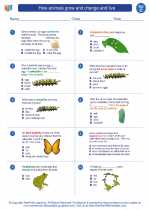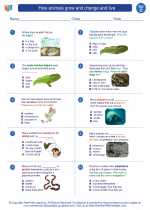Aquatic Environment
An aquatic environment refers to the various types of environments that are dominated by water. These environments can be found in oceans, rivers, lakes, ponds, and wetlands. Aquatic ecosystems are home to a wide variety of plants, animals, and microorganisms, each of which has adapted to the unique conditions found in water-based habitats.
Types of Aquatic Environments
- Oceans: The largest type of aquatic environment, oceans cover more than 70% of the Earth's surface. They are home to diverse marine life, including fish, whales, and coral reefs.
- Rivers and Streams: These freshwater environments are characterized by flowing water and are home to species such as trout, salmon, and various types of insects.
- Lakes and Ponds: These standing water environments support a variety of life, including fish, amphibians, and aquatic plants.
- Wetlands: Wetlands are transitional zones between aquatic and terrestrial ecosystems, and they support a unique array of plants and animals, such as water lilies, ducks, and marsh birds.
Adaptations to Aquatic Environments
Plants and animals living in aquatic environments have evolved a range of adaptations to thrive in water. For example, aquatic plants have adapted to absorb nutrients directly from the water, while fish have evolved gills for extracting oxygen from the water.
Human Impact on Aquatic Environments
Human activities, such as pollution, overfishing, and habitat destruction, can have detrimental effects on aquatic environments. It's important for us to be mindful of our impact on these delicate ecosystems and take steps to protect and preserve them.
Study Guide
Here are some key points to remember when studying the topic of aquatic environments:
- Identify the different types of aquatic environments and the unique characteristics of each.
- Understand the adaptations that plants and animals have developed to survive in aquatic habitats.
- Recognize the human impact on aquatic environments and the importance of conservation efforts.
By understanding the complexities of aquatic environments, we can appreciate the diversity of life that exists within these ecosystems and work towards preserving them for future generations.
[Aquatic] Related Worksheets and Study Guides:
.◂Science Worksheets and Study Guides Third Grade. How animals grow and change and live

 Worksheet/Answer key
Worksheet/Answer key
 Worksheet/Answer key
Worksheet/Answer key
 Worksheet/Answer key
Worksheet/Answer key
 Worksheet/Answer key
Worksheet/Answer key
 Vocabulary/Answer key
Vocabulary/Answer key
 Vocabulary/Answer key
Vocabulary/Answer key
